[2024] Best 8 Open Source AI Chatbot Software for Developers
What are some of the best options to consider when it comes to open-source chatbot? And what are the essentials you should know about them? In this post, we’ll explore the best open-source chatbot platforms in the market today.
What Is Open Source Chatbot?
An open-source chatbot is a chatbot application whose source code is made freely available to the public, allowing developers to view, modify, and distribute the code according to open-source licensing terms. Open-source chatbots offer transparency, flexibility, and community collaboration, enabling developers to customize, enhance, and deploy chatbot solutions for various purposes without restrictive licensing constraints.
Why Choose Open Source Chatbot? Is it Better than Non-Open-Source Tool?
For an open-source chatbot, the source code is available to the public. This gives owners more flexibility and customization options to improve the code according to their needs.
Also, it leads to greater transparency and control as developers can improve the software quality by learning from others. And more importantly, an open-source chatbot lets you experiment with the program before you go ahead with it.
Contrarily, a non-open-source or proprietary chatbot is developed by a specific company that doesn't give the source code. They do offer a professional support team along with other utilities. But you have to rely on the company's resources and tools to build and maintain your chatbot. It is more often a huge deal breaker for most business owners.
8 Best Open Source Chatbot in 2024
Coming to the main part, this section is going to present the top-ranked open-source conversational AI software. Take a look.
1. Microsoft Bot Framework
Best for: Active learning
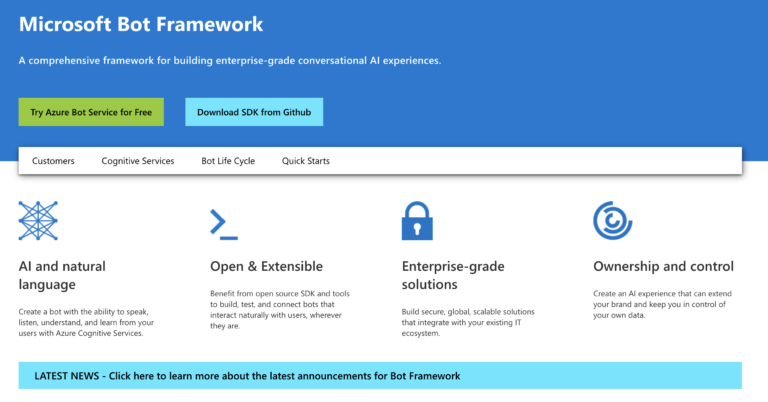
Also known as the Azure bot framework, it allows users to build their chatbots for their business. The framework includes active learning and multi-language support to connect and communicate with your audience.
It's best suited for the developers as the framework is primarily code-driven. You must know the basics of programming to run this code.
Key Features
- Bot Framework Composer: Allow developers and non-technical users to design, build, and test chatbots.
- Language Understanding (LUIS): A natural language processing tool that helps chatbots understand user input, extract intents.
- Enterprise-Grade Security: Offer enterprise-grade security features, compliance certifications, and data protection measures.
- Bot Framework SDK for Web Chat: Bot Framework SDK for Web Chat enables developers to embed chatbots directly into web applications, websites, and portals.
Pros
- Easily integrates with tools like Cortana, Microsoft Cognitive Services, and more.
- Active learning support
- The developers can design the conversation flow for their chatbots.
Cons
- Steep learning curve
Pricing: Free for Standard channels. Premium plan: $0.5/1000 messages after 10,000 messages per month.
Verdict: It supports active learning and can gather important information by asking pre-set questions.
2. Rasa
Best for: Contextual chatbots

Another powerful conversational chatbot that can automate both text-based and voice-based conversations. Made of Rasa NLU and Rasa Core, it offers advanced functions like support for synonyms and hyponyms. Because of this, you don't have to train the bots for every single variation with Rasa open-source chatbot.
Key Features
- Dialogue Management: Handle the flow of conversations, manages dialogue context, and orchestrates responses based on user inputs, intents, and the bot's state.
- Open-Source: Leverage machine learning techniques to improve chatbot understanding, response generation, and conversation quality.
- Machine Learning-based: Offer enterprise-grade security features, compliance certifications, and data protection measures.
- Multi-Channel Support: Deployed on various messaging platforms, websites, mobile apps, and voice assistants, offering multi-channel support.
Pros
- Make personalized chatbots.
- Multiple pipelines for production, development, and staging.
- Provides analytic data to boost efficiency.
Cons
- The chatbots consume a lot of resources.
- It requires a deep understanding of Python language and NLP/
Pricing: Available for free but also provides custom pricing.
Verdict: It is an amazing platform that has all the necessary tools you need to build, develop, and improve AI assistants. It is particularly good for building contextual chatbots.
3. Wit.ai
Best for: Powerful NLP engine
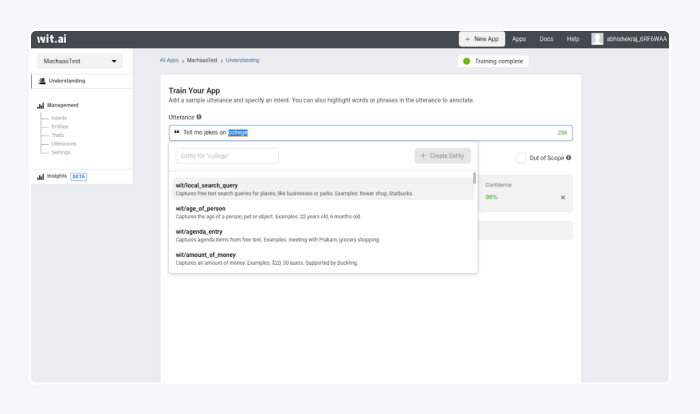
This tech giant was owned by Facebook in 2015. Since then, it has been a go-to open-source conversational AI for many businesses. Wit.ai comes loaded with voice-control features, multilingual support, and quick integration with other channels. For many users, its NLP engine is even better than Microsoft and Amazon.
Key Features
- Voice Recognition: Developers can integrate it with voice interfaces, speech recognition systems, and voice-controlled devices to create voice-activated chatbots and conversational applications.
- Multi-Language Support: Support multiple languages and dialects, enabling developers to create multilingual chatbots.
- Natural Language Processing: Leverage NLP techniques to process and analyze user messages, learn from training data, and improve the chatbot's language understanding capabilities.
- Community Support: It has an active developer community, forums, documentation, and resources where users can share knowledge, ask questions.
Pros
- Supports a staggering 132 languages.
- Easily integrate with Messenger.
- Powerful NLP engine
- Its SDK is available in multiple coding languages.
Cons
- Requires complicated and tedious training and implementation.
Pricing: Free
Verdict: It has a powerful NLP engine, making it the best choice for business owners who love to code in different languages.
4. BotPress
Best for: Bot deployment on your own server
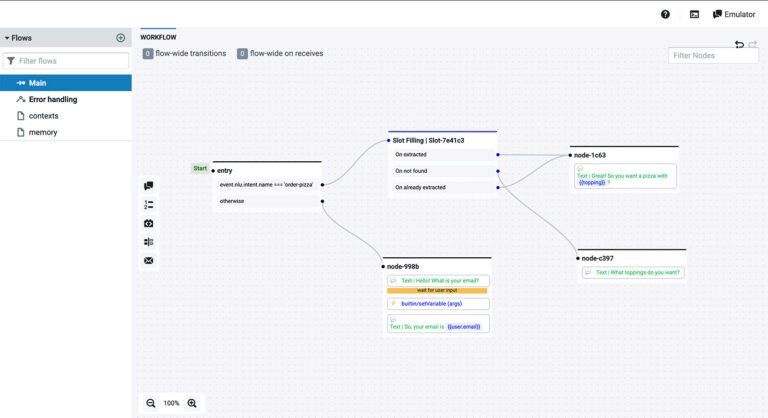
BotPress is one of the best open-source chatbot frameworks that enables developers to build, deploy, and manage chatbots and virtual assistants for various use cases. It offers a comprehensive set of tools, features, and integrations to create sophisticated conversational experiences using natural language understanding (NLU) and dialogue management capabilities.
Key Features
- Bot Analytics and Insights: Offer analytics and reporting features to track chatbot performance, user interactions, engagement metrics, and conversation data, enabling developers to analyze and optimize the bot's behavior over time.
- Customizable UI Components: Customize the chatbot's user interface, design conversational widgets, and create personalized chat experiences tailored to specific branding and user preferences.
- Visual Flow Editor: Allows developers to design conversational flows, define dialogue logic, and create interactive chatbot interactions without writing code.
- Plugin System: Developers can extend the platform's functionality, add new features, integrate third-party services.
Pros
- Users can give advanced permissions.
- Provides clear and accurate analytics to take necessary actions.
- Users can build bots and deploy them on their servers.
Cons
- Fewer features apart from action-based bots and analytics.
Pricing: It has a free version and also offers custom premium plans to businesses.
Verdict: The platform is particularly useful as it gives actional chatbot analytics. Plus, you can use advanced permissions for anyone to edit the bot as well.
5. DialogFlow
Best for: IoT integration

If you want to create friendly conversations or voice-based chatbot interfaces, this is the right tool for you. As the platform is powered by Google's machine learning, you can easily connect with users on Messenger, Alexa, Google Assistant, and so on. Plus, DialogFlow boasts multilingual support, IoT integration, and offering SDKs for over a dozen platforms.
Key Features
- Voice Interface Integration: Enabling developers to create voice-activated conversational experiences for users.
- Contextual Understanding: Provide personalized responses based on previous interactions, enabling more natural and engaging dialogues with user.
- Training and Testing Tools: Provide tools for training machine learning models, testing chatbot responses, evaluating performance
- Google Cloud Integration: Integrates with Google Cloud services, such as Cloud Functions, Cloud Storage, and BigQuery.
Pros
- Offers efficient text-based and voice-based AI assistants.
- Provides SDKs for many popular platforms + supports 20 languages.
- Supports Internet of Things (IoT) integration
Cons
- This chatbot doesn't offer any live customer support service.
Pricing: Offers a trial period. Then, you have to pay: Text- $0.007/request and Audio input/output- $0.06 per minute.
Verdict: A remarkable chatbot to integrate with your business-specific platforms.
6. BotKit
Best for: Extensive documentation
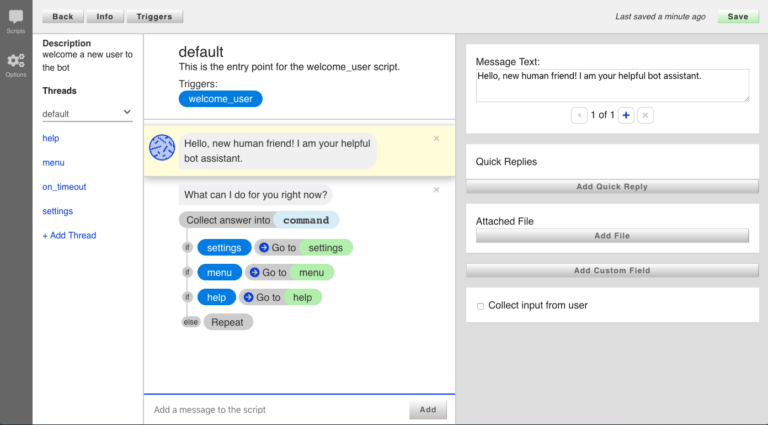
BotKit is an open-source toolkit for building chatbots and conversational interfaces developed by Howdy.ai. It simplifies the development process by offering pre-built components for handling messages, user inputs, dialogue flows, and integrations with various messaging platforms. BotKit provides developers with a flexible and extensible toolkit for creating interactive chatbots and conversational interfaces that can engage users in natural, context-aware conversations
Key Features
- Dialogue Management: Manages dialogue flows, context switching, and conversation history to create coherent interactions with users
- Customizable Responses: Customize chatbot responses, design interactive messages, incorporate rich media content, and create engaging conversational experiences tailored to specific use cases and user preferences.
- User Authentication: Offer user authentication capabilities to identify and authenticate users interacting with the chatbot, personalize responses, and access user-specific data or services securely.
- Message Handling: Handle and process incoming messages, understanding user intents, extracting entities, and generating appropriate responses to engage users in conversations.
Pros
- Friendly interface.
- Supports a lot of platforms.
- Built-in content management and analytics.
Cons
- It doesn't have a built-in NLP.
Pricing: Free
Verdict: Its extensive documentation and friendly guideline make it very easy to learn this chatbot. In addition, it offers many integrations that you can employ for your business needs.
7. Chatterbot
Best for: Language independent
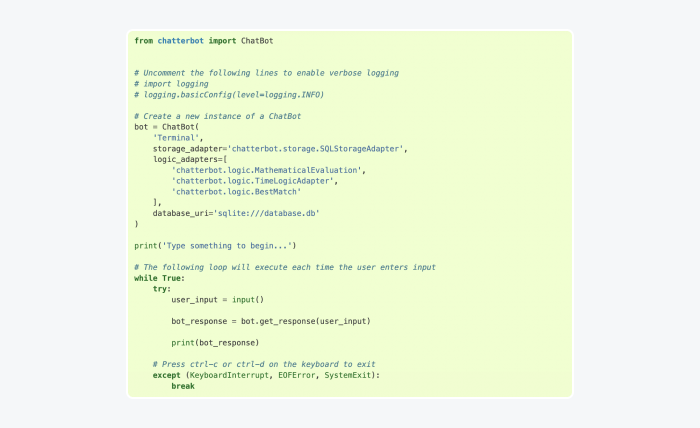
This Chatterbot is a Python library that enables developers to create chatbots with conversational capabilities using machine learning algorithms. It is designed to simulate intelligent conversations by processing and generating responses based on training data and conversational patterns. Also, the developer can modify the code for any desired language or match their business needs.
Key Features
- Machine Learning-based: It uses machine learning algorithms, such as natural language processing (NLP) and text classification models, to train chatbots on conversational data and generate contextually relevant responses.
- Pre-trained Models: Offers pre-trained language models and conversational datasets that developers can use to bootstrap chatbot training.
- Multiple Language Support: Supports multiple languages and dialects, enabling developers to create multilingual chatbots that can interact with users in different languages.
- Community and Documentation: It has an active community of developers, contributors, and users who share resources, best practices, and solutions.
Pros
- The more the input, the better and more accurate the output.
- Supports all languages.
- It has built-in automation features.
- It can easily be edited, modified, and customized.
Cons
- Use it if you have deep Python language skills.
Pricing: Free to use. $37 for the front end.
Verdict: It is a Python-based chatbot, making it an ideal choice for Python users. You can easily import its chatbot library to your Python projects.
8. Amazon Lex Framework
Best for: Text into speech conversion
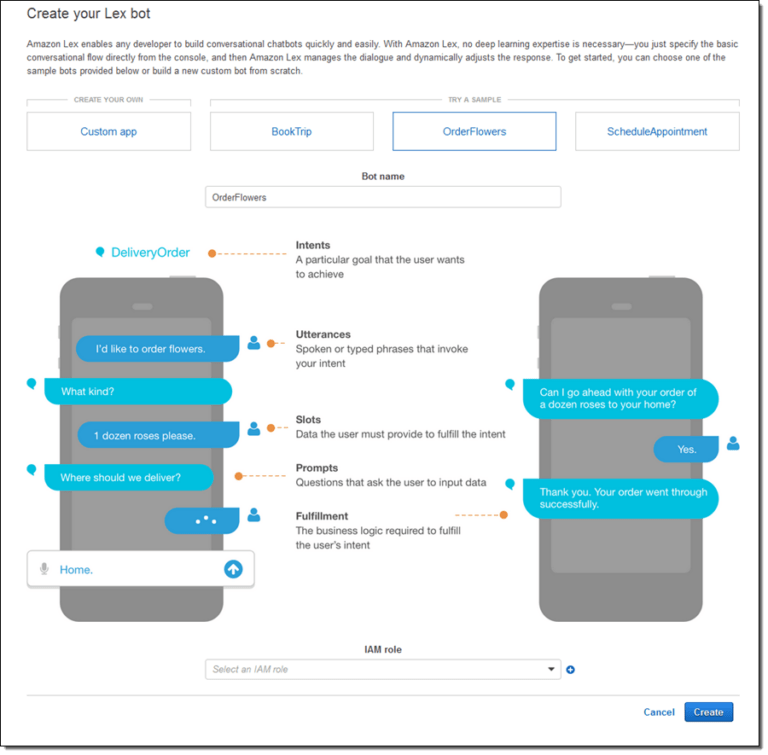
Amazon Lex can be a handy self-hosted chatbot for your business's landscape. It is a cloud service provided by Amazon Web Services (AWS) that enables developers to build conversational interfaces, such as chatbots and virtual agents, using natural language understanding (NLU) and automatic speech recognition (ASR) technologies. Amazon Lex simplifies the process of creating intelligent conversational experiences by providing pre-built components, machine learning models, and integration with other AWS services for building scalable and interactive chatbots.
Key Features
- Integration with AWS Services: Integrate with other AWS services, such as Lambda functions, S3 storage, DynamoDB, and Amazon Polly, to leverage additional cloud capabilities for data processing
- Built-in Prompts and Validation: Built-in prompts, validation rules, and error handling mechanisms to guide users through conversations
- Security and Compliance: Follow AWS security best practices, data encryption standards, and compliance certifications to ensure the confidentiality, integrity, and availability.
- Multi-Platform Support: Integrates with messaging platforms, voice interfaces, mobile apps, and web applications, enabling developers to deploy chatbots across multiple channels and devices for engaging users in seamless conversational experiences.
Pros
- Comes loaded with automatic self-scaling capabilities.
- Easy integrations with Messenger, Kik, Slack, and so on.
- Accurate speech recognition.
- Use it on multiple platforms with a single click.
Cons
- Supports the English language only.
Pricing: The price depends on the total number of requests.
Verdict: It can convert both audio into text and text into audio, making it an attractive option for businesses.
How to Look for in the Best Open-Source Chatbot?
Now that you know about the best open-source chatbot software out there, the next step is to help you choose the best. Here are the five key factors that you need to consider when comparing and choosing an open-source chatbot:
1. Look for Relevant Manuals
Each chatbot is built differently. To use it efficiently, you must have access to resources like how to set it up, use it, modify it, and update the code. Without this knowledge, it can get difficult to make the most of the software.
2. Compare Prices
While open-source chatbot software is free but mostly, companies charge you for hosting the chatbots on their servers. Check out the price you need to pay for text and media input and evaluate if it matches your budget.
3. Go Through Features and Major Cons
Probably the most crucial factor. Go through the key features and functionalities of the chatbot and how they can come in handy for your company. Make sure the program offers all the utilities that you are looking for. Keep in mind that you can also add the code for many features yourself.
4. Match Your Coding Language
Make sure that the chatbot you prefer should fit well the coding language you're already using for your business. If the technology of your open-source AI chatbot is not the same, the cost of training, experimentation, and implementation all adds up.
5. Prioritize Ease of Use
Not everyone is tech-savvy. Always go for the chatbot that is easy to handle and use. Often, open-source chatbot software has a steep learning curve. Be sure you understand the whole procedure to avoid facing technical issues now and then.
Bonus: Build Your Own Conversational Chatbot with Ease
If you're looking to create a chatbot without any programming knowledge, ChatInsight could be a valuable tool for you. It's designed to streamline the process of developing a chatbot using intuitive, user-friendly interfaces and pre-built templates that simplify the creation and management of your bot.
ChatInsight is an advanced AI-powered chatbot designed to assist users with a wide range of queries, from providing information and advice to engaging in casual conversation. Built on the latest AI technology, ChatInsight can understand and process natural language, making it easy for users to interact using everyday language. The chatbot continuously learns from interactions to improve its responses and provide more relevant and personalized assistance over time.
Final Remarks
And that's all for today. Now, the decision is yours to make which open-source chatbot software you would love to try. Just be sure to understand your business or company's unique systems and requirements and choose a relevant tool accordingly. And if you ever want to build your own chatbot, use the all-powerful ChatInsight. Whether you want to communicate with your clients, take leads, troubleshoot issues, or automate tasks, it helps you achieve all that. Feel free to ask any questions.
FAQs
- Microsoft bot Framework
- Rasa
- Wit.ai
- WordPress
- DialogFlow
- BotKit

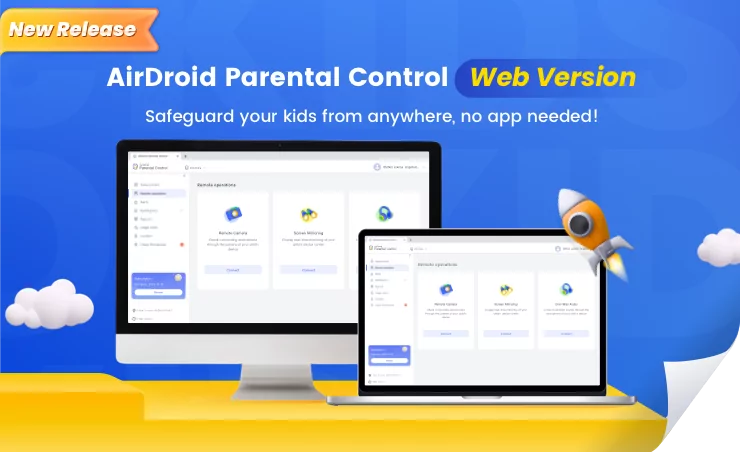


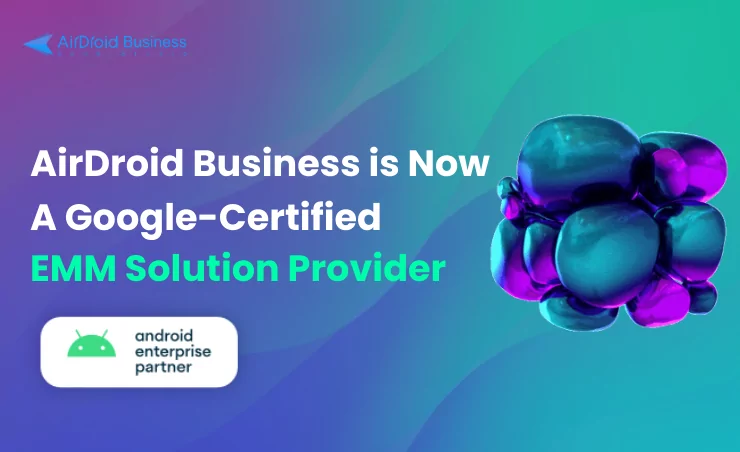



Leave a Reply.